
UNWC
Mekong Agreement
Article 6 of the UNWC provides factors for the principle of equitable and reasonable utilization, including (a) geography and natural character of the land, (b) social and economic needs, (c) relative dependent populations, (d) effects of development, (e) existing and potential uses, (f) costs and conservation, and (g) availability of cost-effective alternatives.
Article 5 of the Mekong Agreement requires states to use the Mekong River in a reasonable and equitable manner, pursuant to all relevant factors and circumstances, the Rules for Water Utilization and Inter-basin Diversion under Article 26 and with the following requirements for notification and consultation. The Mekong Agreement makes an important distinction between tributaries and the mainstream. Article 5(A) states: “On tributaries of the Mekong River, including Tonile Sap, intra-basin uses and inter-basin diversions shall be subject to notification to the Joint Committee.” In contrast, for the mainstream: (1) during the wet season intra-basin use requires notification. But, inter-basin diversions during the wet season and intra-basin use during the dry season both require consultation with the aim at arriving at an agreement by the Joint Committee. Furthermore, during the dry season, “any inter-basin diversion project shall be agreed upon by the Joint Committee through a specific agreement for each project prior to any proposed diversion. However, should there be a surplus quantity of water available in excess of the proposed uses of all parties in any dry season, verified and unanimously confirmed as such by the Joint Committee an inter-basin diversion of the surplus could be made subject to prior consultation.” See the matrix below for a comparison. The further distinction between wet and dry season uses is unusual in this context. The result is to severely limit the power of the Joint Committee for projects on tributaries and intra-basin uses during the wet season.
Both frameworks embrace equitable and reasonable utilization as a cornerstone principle.
Equitable & Reasonable Utilization
The UNWC forgoes a permanent body. Instead when a dispute arises, states are obligated to seek a settlement by peaceful means. Article 33 first directs states to use any applicable agreement between them. If that fails, the states should look for mediation, arbitration, joint watercourse institutions, or the International Court of Justice. After six months, an independent Chairman and a member from each state should create a fact-finding Commission. The decision is made by a majority. Finally, if necessary, the dispute may end with the International Court of Justice or an arbitral tribunal that is established and operating.
The UNWC forgoes a permanent body. Instead when a dispute arises, states are obligated to seek a settlement by peaceful means. Article 33 first directs states to use any applicable agreement between them. If that fails, the states should look for mediation, arbitration, joint watercourse institutions, or the International Court of Justice. After six months, an independent Chairman and a member from each state should create a fact-finding Commission. The decision is made by a majority. Finally, if necessary, the dispute may end with the International Court of Justice or an arbitral tribunal that is established and operating.
The Mekong Agreement created a sophisticated institution called the Mekong River Commission (MRC). It is composed of three permanent bodies: the Council, the Joint Committee, and the Secretariat. The first two bodies are composed of high-level government officials from each member state. The Council is tasked with creating policies that the Joint Committee must implement. The Secretariat renders technical and administrative assistance. When a dispute arises on the subject matter of the Mekong Agreement, the Commission makes the first attempt at resolving the dispute. Article 34 specifically highlights these functions for the Council in Article 18(C) and the Joint Committee in Article 24(F). If the Commission is unable to resolve the dispute in a timely manner, Article 35 directs the states to try to use diplomatic channels. If all else fails, it recommends mediation with the consent of the states.
Mekong Agreement
UNWC
The governace structure of the UNWC is ad hoc comapred to the Mekong Agreement, which created a permanent body. However, the dispute resolution mechamism of the UNWC is much more detailed and formal.
Governance & Dispute Resolution
UNWC
Mekong Agreement
Mekong Agreement
The Mekong Agreement focuses on the “basin” and distinguishes between tributaries and mainstream and between wet and dry seasons. Nevertheless, the Mekong Agreement is not as careful with definitions. “Basin” is never actually defined. Similarly, “tributary” and “mainstream” are only defined in non-binding external procedures. Depending on the situation, a state may have little to no obligations beyond reporting, even though the project could have significant impacts on downstream states.
A watercourse encompasses the entire water system, including surface and ground waters, that flows into a common endpoint.
The scope of what is governed and the mechanisms of governance vary significantly between the two treaties.
How the Mekong Agreement Compares with the UN Watercourses Convention
Scope
While the Mekong Agreement and the United Nations Watercourses Convention (UNWC) reflect the same principles, neither truly restricts any Mekong country's action. The UNWC falls short because Cambodia, Laos, Myanmar, Thailand, and China are not members. They are only bound by the parts of the UNWC that codify customary international law. The rest of the convention does not affect them. Vietnam cannot enforce any rights under the treaty because parties to the UNWC can only enforce against other members. As a regional agreement, the Mekong Agreement was a good start in 1995, but it is too limited in scope and does not include China or Myanmar.
Consultation is...